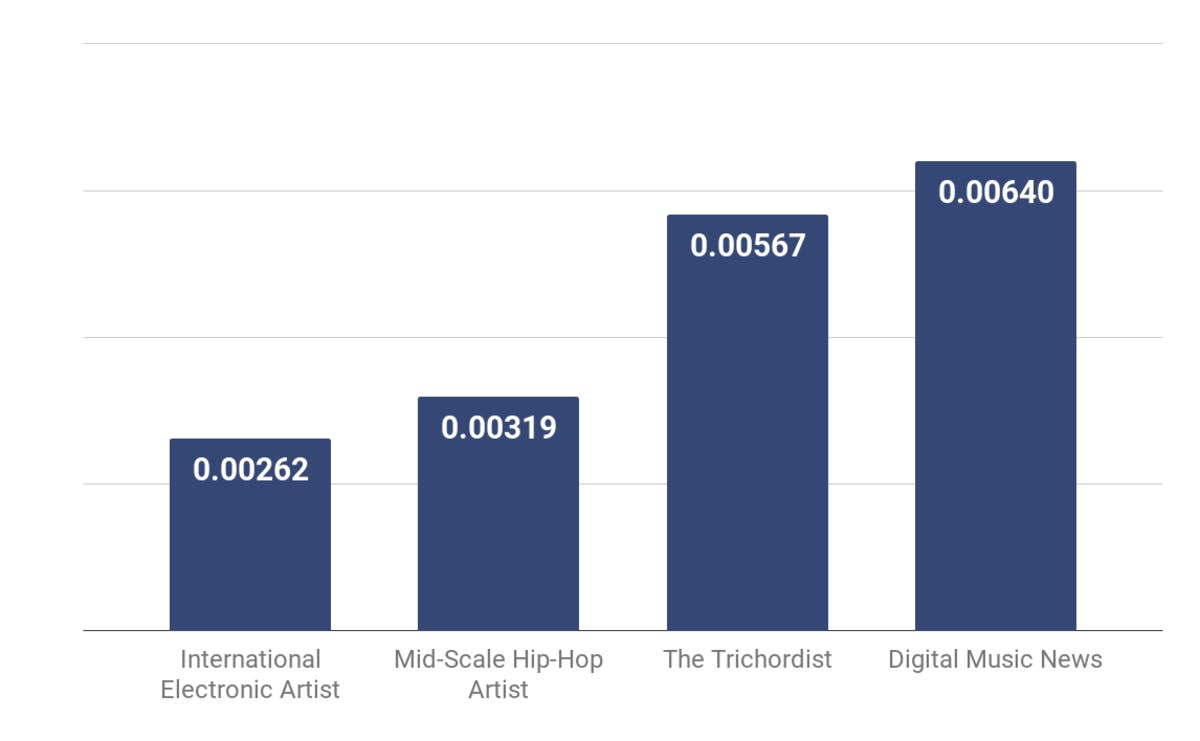Music streamer Deezer is soliciting rights holders to test a major change in how streaming royalties are calculated. So-called “user-centric payments” would more fairly compensate low and mid-tier artists, according to its supporters.
While not a top tier player, Deezer’s 14 million users would provide an adequate test of the concept.
How Much Does Deezer Pay Per Stream
But so far, only smaller independent music companies have signed on to Deezer’s UCPS test, including Because Music, Wagram Music, Play Two, Idol, Tot ou tard, Outhere Music, #NP, Believe Distribution Services, Six et Sept, International Artist Organization of Music, FELIN, UPFI, MMF France and GAM.
Streaming Royalty Calculator is a tool which helps estimate your payout per stream. It is only an estimate. There are no official payout rates so we have researched various sources and have come up with a good general estimate per stream. This is only to give you an estimate of what to expect. Deezer transfers the revenue to the music distributors approximately 3-4 months after the music has been streamed. At iMusician, you can withdraw your money any time, directly into your PayPal or bank account, with no minimum payout required. If you have a Deezer Backstage account, which we highly recommend, you can also follow your streams.
France, which accounted for 52 percent of the label's 186 Deezer streams, paid out $0.0039 per stream. Although it generated just one stream, Croatia had the higher royalty at $0.0404 per stream. For now, however, the payout that you get from any streaming service (except for YouTube video-streaming, and, as of late, Deezer's user-centric payout) is a function of: Total DSP’s revenue pool Negotiated global payout as a percentage of that revenue Total number of streams on the platform.
Deezer’s payout for artists depends on which country/continent the plays are coming from and if the user is premium or free. The latest average for 2019 is roughly $.003275 per stream. Use our calculator tool to compare all services. How Much Does Pandora Pay Per Stream?
Pros & Cons
Under the current system, per-stream payments are calculated as a share of each streaming service’s revenue prorated by the number of streams. “Sounds simple, but mixed with the near-payola of Spotify’s playlist culture and Pandora’s ‘steering’ deals, it’s really not,” says music attorney Chris Castle. “Negotiating leverage allows big stakeholders to tweak the basic calculation with floors, advances (aka breakage), nonrecoupable payments and other twists and turns to avoid a pure revenue share.”
Deezer Streaming Payout Chart
Not so fast, says MIDiA analyst Mark Mulligan: “The big issue then, as now, was that it is a very complex concept to implement which may well only have modest impact on a macro level but may also have the unintended consequence of worsening income for smaller artists. Fans of smaller artists tend to be more engaged listeners who generate a larger number of streams spread across a larger number of artists. The net result could be lower average income for smaller indie artists, and higher income for mainstream pop acts who have listeners with lower average streams spread across a smaller number of artists.”


Deezer Music Streaming
That is due to the billing model practiced by all streaming services to date. In the case of classic CD purchases the artist is paid regardless of how often the disc is played at home. Streaming, on the other hand, is based on the number of streams of an artist in relation to the total number of streams of this service. As a result, particularly popular artists receive a disproportionately high share compared to smaller, local or niche acts and genres. Not only do they have a lot of fans, but they are also often streamed by them. The streaming service Deezer is now promoting a user-based billing model instead. This is how it works: if, for example, a single subscriber plays a particular song 10 times a month and that subscriber streams a total of 100 songs in that month, the rights holders of that song would receive 10 percent of that user's net subscription fees. Hence, the subscriber only pays for the artists whose music he actually listens to. The model would favour lesser known musicians and make manipulation by bots more difficult. The payment would also be less influenced by permanent users who constantly run streaming services as background music. Deezer premium subscribers can now see at www.deezer.de how much of their subscription fees will go to the artists they listen to under the current model and how much it would be under the user-based 'UCPS' (User-Centric Payment System) model.
